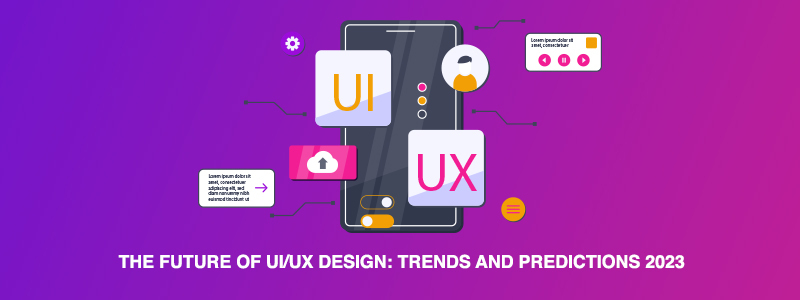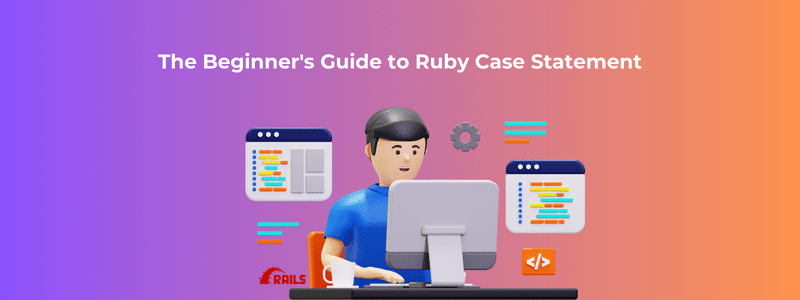Our top UI UX trends for 2023 are still quite surprising after Adobe’s $20 billion acquisition of Figma.
What an incredible price for a collaborative prototyping tool for the UX and UI communities. As UI UX has evolved over the years, it has become an integral part of business operations.
Accessibility, erweiterte Realität, and the design process are among the top trends for UI UX in 2023.
Top UX/UI trends for 2023
- Synchronization of devices.
The importance of this trend lies in the fact that it indirectly determines every other trend. It is not because applications are good that people want to use them, but because they are available. A wide variety of products are available. A less expensive, a more expensive, a bare-bones or full-featured system. There is no problem with the choice. Users need to be able to synchronize settings and content between computers, laptops, phones, tablets, smartwatches, and other digital devices.
Businessmen need it, too, as do ordinary people. In 2023 and beyond, usability is the ability to navigate the web and customize the experience with an option to have everything on any device seamlessly.
- Design for mobile devices first.
This follows naturally from the previous point. Mobile devices are used in many different ways and for many different reasons by people. You can book flights, talk to friends, make online calls, shop online, and attend online calls. With convenience in mind, everything can be done on the go.
Because of this, pretty much everything should have user interface and user experience design. Applications should adopt user-friendly and scalable design languages. When it is implemented on every device, it will convert visitors into paying customers.
- Design for wearable devices.
The first thing to know is that it exists. The second reason is that people are increasingly using their bands, watches, and other gadgets in multiple ways. Designers are forced to innovate on a whole new level when designing for personal, professional, and social use.
Interruptions should be minimized as much as possible. Users want to know what’s going on, but designing a feed that is helpful rather than intrusive can be a challenge. A more friendly approach to delivering content will be the focus of graphic artists in 2023. “Mirror designs” are also a trend, which forces teams to design applications in a similar way across multiple devices. Tablets and smartwatches should reflect what happens on smartphones (or be able to do it). In reverse as well.
It is also very important to prioritize contextual design. You should be able to play music or podcasts while recording a run on your smartwatch. It’s just a couple of taps away. Last but not least, light-weight interactions have become increasingly popular. We will be able to respond more quickly to messages and texts without a full-size keyboard (by using voice recognition or a simple emoji). The ability to interact quickly within an app and cross-app, as well as the mirror design previously mentioned, will elevate many applications to the next level. This is especially important given another important UX/UI trend.
- Design for cross-application use.
Many FinTech companies reach out to partners in order to strengthen and expand their market presence. When a company works with another application, it should have a dedicated subpage for it and mobile options that are easy to navigate.
An app should display clearly defined rules and options when a customer wants to pay their electric bill and considers taking out a mortgage from a third-party partner. It does not require external software, nor does it require complicated messaging. If there is such a thing, it should be a clear offer that is easy to understand by the user. Users love comparing offers, so they are easy to compare.
- Authentication of ID. Several options are available for confirming identity.
Old-fashioned passwords, fingerprint scans, and retina scans. These are some of the examples. Every one of them presents a unique set of challenges. When someone is looking over the user’s shoulder, what and how should a login dialogue appear? In the event that Face ID fails to recognize a person’s face over a mask, what should one say? Can you scan your passport? Are we displaying a symbolic cover or the actual ID and photograph of the user?
Several of these issues have already been addressed in recent years, but a few questions remain. Is privacy a concern? Is there a way for us to distinguish ourselves from other apps on the market and prove that our system is truly secure? In what ways can all of this information be incorporated into the application’s overall branding and visual identity? Is there a new and innovative way to say something old? There is no doubt that this is one of the most challenging UX/UI trends to figure out.
- Scrollytelling replaces the scroll.
Things have just gotten serious. Taking previous trends lightly isn’t a good idea. To transmit information to others, you need a message that is interesting to them and a format they will accept. There’s a new inside joke that says scrolling is tedious. The last thing anyone wants to do is scroll down a page to find relevant information, hoping that the boring parts will eventually become useful.
There is a recipe for that in scrolly-telling. It’s a set of tricks that energizes users and makes them see a page differently. A bunch of animations appear next to the text in the center when you scroll down. An additional graphic that explains what you just read. Through movement, color, and contextualization, scrollytelling provides further context, additional explainers, and enriches content with dynamic elements.
It is impossible to tell someone what Matrix… err… what storytelling is. Click this link to learn more about it. Static pictures do not do it justice.
- Data made sexy for users.
Their apps are loved by their users. Data is collected by apps. Data is sometimes displayed back to users. Despite loving their apps, users are typically lost in the context of large data pools. A poorly displayed item is one that is hidden or underestimated. It could also be that a person responsible for UX/UI does not understand this particular area.
There is no doubt that the pattern is evident. A top priority in 2023 will be displaying data and simplifying the messaging that comes from it. This is very important, so let me reiterate it. Providing users with understandable data is not enough. They want to know everything about it. The screen needs to be simplified; everything distracting should be removed.
It may also refer to areas and numbers that are too large for users to tap into. Physically, yes. Exactly why? The importance of interaction cannot be overstated. People need the option to access additional information since not everything can and should be displayed on one screen. By tapping and diving into a category or spending, for example, you can get that information. For users to tap it and learn more, there needs to be breathing room. It is not a good idea to cram as much information as possible onto a single screen.
- Emotional design will gain even more traction.
The device doesn’t matter whether it’s a smartwatch, tablet, smartphone, or potato. The content you display is displayed somewhere. Your monthly spending is probably displayed there, as well as your progress in tracking your physical activity. You receive feedback from the app. Not information, but feedback. An icon (band, watch, phone) or a more complicated image (even a splash screen, sometimes) gives context to the device.
This month, you have been able to save up. On a one-mile run, you broke a record. The number of business contacts you have gathered has increased compared to the previous quarter. My congratulations go out to you! You have perfected the art of getting well-deserved praise from designers. It is important to design these messages that are usually a combination of microcopy and a graphic to help users achieve their goals. As a result, customers become loyal to the company. In the coming months, emotional design will only become more important.
- The metaverse.
The meta design. Is meta… erm… everything? It’s no secret that we have a difficult time defining Zuckerberg’s Meta. The possibility of playing chess with a friend miles away in a park will not occur today, but it will sometime in the future. Users who are glued to screens 24 hours a day, 7 days a week, at least have that promise.
Fortunately, meta-future can be imagined without extreme examples. Facebook’s VR remote work app and a good, old VR set are all we need.
Using VR to interact with agile teams across the world rather than Skype or Zoom could be the future of work and cooperation. There will need to be a design for that.
It won’t happen tomorrow, it won’t happen right away. The minute Zuckerberg mentions the Meta transformation, it is reasonable to imagine whole teams of UX/UI designers storming VR platforms. It will be necessary to hire specialists to handle virtual user experiences and user interfaces. A more virtual future is closer than we think, and 2023 will be the first big step.
- The norm will be accessibility.
The needs of a healthy person are fairly easy to predict and implement into an app. How about someone with a disability? There is much more to it than just a dark theme.
Implementing contrasting colors, increasing text size, eliminating graphic content to fulfill the previous need, adding captions to videos, or even explaining images are all steps in the right direction. There is still more to be done. Users are more likely to use a product if it pays attention to visual hierarchy or allows them to resize entire screens.
- MVP will be replaced by MLP.
For a variety of reasons, minimum viable products (MVPs) are no longer viable. Here comes the minimum loveable product (MLP), which is basically MVP without compromises or bugs.
MLP focuses on users and their needs. There is a sense of completion and minimalism in it. There is still work to be done on this version of MVP, but it has been polished. When MVPs are implemented, users will not be able to experience all features and will still have negative experiences. Although MLP does not represent a finished product, users can be satisfied with what they receive.
We can expect this trend to continue in the future. Software development is not only prevalent in the FinTech industry, but also in general.
Make sure you dress for success!
It’s no secret that the latest trends in UX/UI are very human-centric. Companies don’t design products for themselves, but for their customers. In addition to being very demanding, they are also increasingly conscious of how they want to use their devices every day. Think about software development services with a little bit of pepper if you want to make an impact. Your product will be good, but will lack something really important without extra value and consulting. SchienenCarma, a well-known RoR development company has hands-on expertise in providing high end UI/UX design services and RoR solutions at affordable prices.





